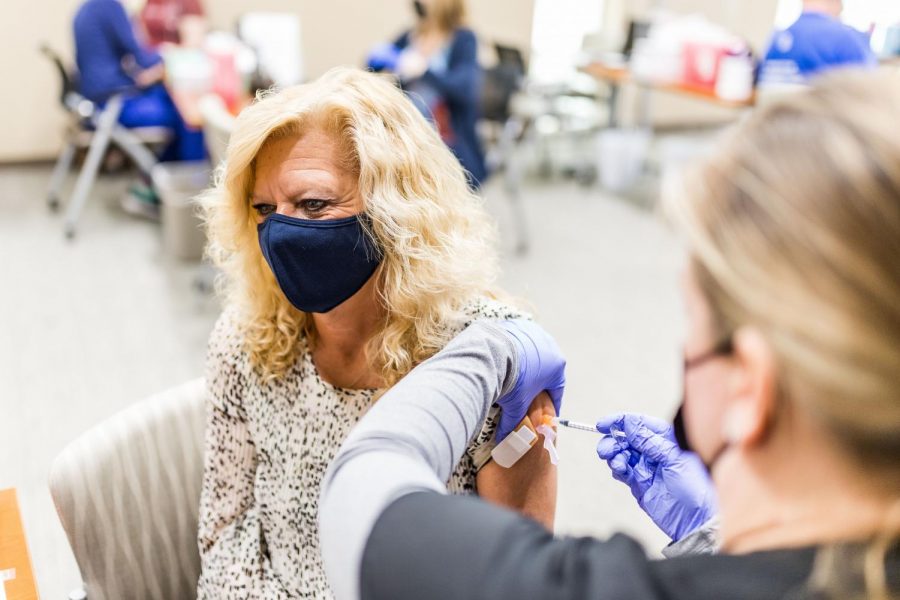The risks of incorrect rapid COVID-19 tests
Photo by James Tananan Kamnuedkhun
Erin Smeleser receives the COVID-19 vaccine at SSM Health.
January 5, 2022
With a rise of incorrect test results from rapid COVID-19 tests, the correct number of individuals with COVID-19 is unknown and demonstrates the sacrifice of accuracy for speed.
Both false negative and positive cases have been reported, as possible with any test, but the chances of a false result are raised with the use of antigen-based rapid tests. The U.S. Food and Drug Administration has even taken to alert healthcare providers of the possibilities of incorrect results.
“The U.S. Food and Drug Administration (FDA) is alerting clinical laboratory staff and health care providers that false-positive results can occur with antigen tests, including when users do not follow the instructions for use of antigen tests for the rapid detection of SARS-CoV-2,” the FDA said in a letter to healthcare providers on Nov. 2 of last year.
Most rapid COVID-19 tests serve the purpose to look for the antigens of the virus through cells, using the same collection form as laboratory Polymerase Chain Reaction (PC) tests. If the test is positive, the antigens resting on the surface of the virus bind with different variants of antibodies arranged on the test to signal for a positive or negative result.
Another at-home rapid test dorm is the PCR test, which is sensitive to the genetic material of the virus, and when used in labs, can provide an extremely high accuracy rate. Some molecular tests, however, have reported rates of false-negative tests up to almost 20% and mixed with the possibilities of mistakes during the process of at-home tests, can drive the number of incorrect results even higher.
Incorrect results from at-home rapid tests can stem from either a malfunction in the test or from the test being given incorrectly. Doctors and health departments alike recommend that an at-home rapid test should be followed by an at-home PCR test that is then mailed off to a laboratory for accurate testing that takes multiple days to process.
At-home COVID tests have also been available to the public and allow for users to be tested on their own. While providing efficiency, the chances of incorrect test results from this testing method are higher than that of laboratory tests.
For individuals who are not fully vaccinated, the Centers for Disease Control recommends a negative COVID test.
Regardless of the chances of an inaccurate reading from rapid tests, the CDC is still urging people to use the tests over the holiday seasons. The guidance recommends using rapid tests before indoor gatherings, regardless of vaccination status or possible symptoms.
“Consider using a self-test before joining indoor gatherings with others who are not in your household,” the CDC stated on their site.









